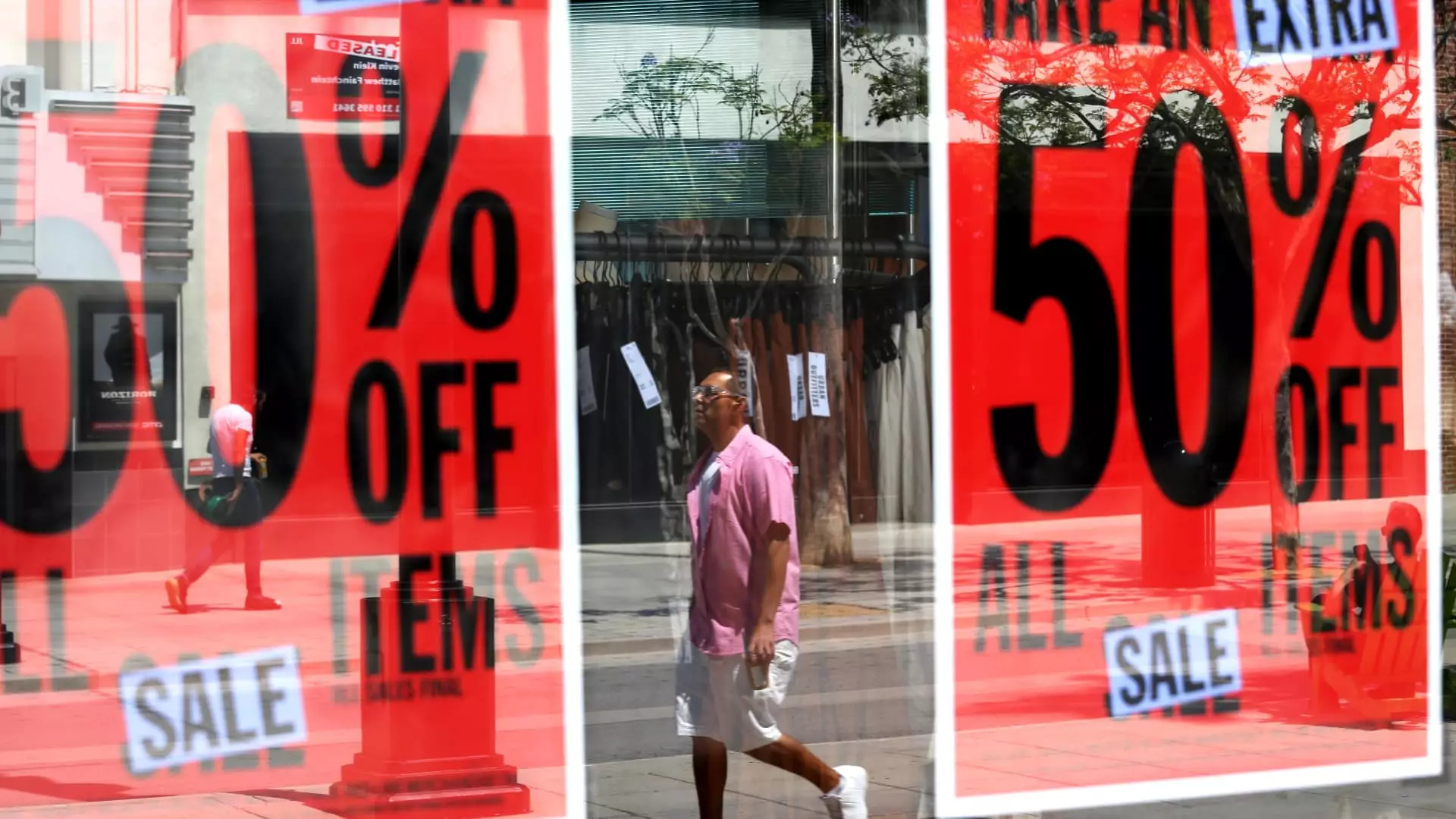The retail sector is currently trapped in a precarious balancing act as President Trump’s trade tariffs loom ominously over consumer behavior, creating a silver lining-glow of urgency for retailers while paradoxically shrouding them in uncertainty. This unique predicament has given rise to strategies seemingly aimed at encouraging consumers to indulge in impulsive spending or risk facing dire price hikes on everyday goods. A subset of brands is cleverly leveraging the impending doom of tariffs in their marketing efforts, urging consumers to “buy now!” before the prices skyrocket. However, one can’t help but wonder: How sustainable is this approach?
When tariffs were initially announced, panic surged through the retail landscape akin to a wildfire. Many companies found themselves scrambling to reassess their pricing structures and inventory systems, fearing that the cumulative effects of these tariffs would reverberate throughout their operations. Major retailers such as Beis and Bare Necessities have resorted to promotional campaigns that cleverly interweave the tariff narrative, enticing consumers to load their shopping carts—or face financial repercussions.
The fundamental irony here is stark; enticing consumers to stock up on items they likely can live without—jewelry, luxury fashion, novelty gadgets—often ignites a compulsive acquisition frenzy. This leads one to question: are retailers truly serving their customers’ needs or merely capitalizing on fear?
A Cunning Dance of Discounts
Some smaller brands, in a bid to remain competitive, have opted for aggressive discount promotions, presenting themselves as stable options in an unpredictable market. For example, Bare Necessities seized the moment with its “pre-tariff sale,” promoting a 30% discount to prompt consumer action. On paper, it seems like a brilliant move, but the long-term consequences may be dire. It implies not just a potential profit loss today, but a substantial depletion of future demand. Thus, while the initiative provides an immediate cash flow boost, retailers could be flirting with their own doom by undermining the value of their offerings.
In a related vein, expert commentary places emphasis on the necessity for retailers to act fast, with the spectral shadow of consumer spending declines hanging over them. Sonia Lapinsky from AlixPartners warns that businesses must adapt quickly as the customer sentiment has turned increasingly skittish. In their desperate scramble for survival, are retailers perhaps overestimating the urgency of purchasing as a temporary fix to a substantial problem?
A Much-Needed Pause for Small Brands
The avalanche of change generated by tariffs is particularly daunting for smaller companies. With limited access to diverse global supply chains, boutique brands find themselves backed against a wall. Lauren Beitelspacher from Babson College posits an unsettling reality: these smaller entities thrive on consumer trust and brand loyalty, yet the uncertainty surrounding tariffs can erase any momentary advantages they have gained.
Consequently, these businesses are left with difficult choices. Risk-taking can often yield beneficial outcomes, but what does that mean in a world where price certainty is an illusion? Smaller firms may be buoyed in the short term by preemptive promotions, but the reality of navigating the treacherous waters of retail in a tariff-altered climate calls for a more cautious approach. Such pervasive anxiety shifts the focus from growth to survival, undermining the very backbone of entrepreneurship.
The Irony of Humor in Marketing
Amidst all the chaos, certain brands have turned to humor as their marketing shield. Beis, for instance, adopted a tongue-in-cheek approach in their communications to customers about impending price hikes. They crafted messages filled with equal parts jest and honesty, creating a palpable connection between themselves and their consumer base. The slight levity it brings acts as a balm over the raw nerves of the political climate surrounding tariffs—a commendable attempt to humanize their brand.
Nonetheless, this strategy has its risks. In an era where political entanglements can fracture consumer loyalty, standing neutral can sometimes provoke skepticism. The challenge lies in striking the right balance—leveraging humor to engage customers without undermining the seriousness of the situation. Clever marketing no longer suffices; sensitivity and awareness are crucial in maintaining customer relationships in such polarizing times.
Forecasting Future Trends
Looking ahead, the big question remains: how will the retail landscape evolve in response to budget-tightening consumers? As signs of economic slowdown grow, retailers face a daunting task of recalibrating their brands to meet shifting consumer demands. As purchasing behaviors continue to fluctuate, the prospect of rekindling shopper enthusiasm through gimmicks alone cannot be the entire solution.
In a political climate rife with uncertainty, retailers must adopt a mindset that goes beyond mere survival tactics; they need to refocus on real engagement and value creation for consumers. After all, in stormy seas, only brands with strong identities and unwavering customer trust can hope to navigate toward calmer waters. The ultimate irony is that amidst the economic turmoil, the future will hinge on clarity, strategy, and a robust understanding of real consumer needs—a lesson that retailers can’t afford to overlook.

